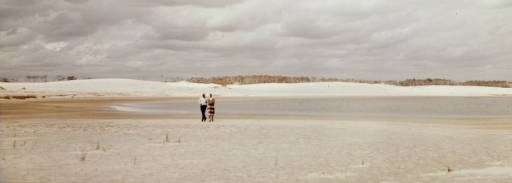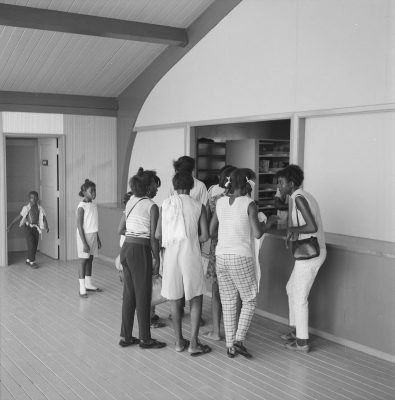
Reprinted from the Tideland News
SWANSBORO – Production on a documentary about the history of The Hammocks and its people has begun, and folks who may be able to contribute are encouraged to step forward and get involved.
Supporter Spotlight
UNC Center for Public Television is making the documentary, which will be funded by the Friends of The Hammocks and Bear Island. The Hammocks is the area on Queens Creek, just outside Swansboro, from which Hammocks Beach State Park was established.
“The idea of the documentary is to tell the cultural history, not necessarily of the park, but of The Hammocks,” said David Pearson, who is president of the friends group. “The story is about way more than just the park. “This a story about African-American history and teaching history.”

To do that in the most comprehensive manner, Pearson is reaching out to the community, hoping anyone with recollections of The Hammocks – a huge tract of undeveloped land that was once used as a personal hunting and fishing retreat – to get involved.
“If we get the word out, maybe they will come forward,” Pearson said.
The friends group in March signed the contract with UNC-TV to produce the documentary, which will also focus on the process that eventually created the park. The signing followed months of discussions, Pearson said.
Supporter Spotlight
“It’s always been a dream of mine to tell the story of The Hammocks,” he said.
The friends group’s board of directors approved spending up to $40,000 of its funds to pay UNC-TV to research, produce, develop and air the 30-minute film. The board will pursue outside sponsors, as is done with many UNC-TV programs, to help defray some of the costs. Completion is expected by August 2018.
In any case, funding should not be a problem. At the time of the vote, the friends group had $85,382 on hand, of which $63,301 is considered “unrestricted.” Under terms of the contract, the friends pay one-third of the total up front. The second third is to be paid once the film is complete and the final third is due after it airs. If it never airs, that final third wouldn’t have to be paid.

“They have started production,” Pearson said last week. “They are doing interviews.” That is important, he noted, because many of the people with knowledge of The Hammocks are elderly.
Its heyday dates back to its purchase in 1920 by Dr. William Sharpe, a New York neurosurgeon.
Pearson took a proactive approach and conducted some interviews on his own. Among those was one with Venice Hurst Cook, the oldest daughter of John L. and Gertrude Hurst. She died on Jan. 8. Others interviewed already include Ned Hurst, son of John and Gertrude Hurst, who has also since died; Claude Crews, a longtime resident who was the park’s first superintendent; and Dr. Lafayette Parker, who was a dean and vice chancellor at Winston-Salem State University.
“Dr. Sharpe’s grandchildren are still living,” Pearson said. “There may be some people here in town who have stuff they’d like to share. “There is a lot out there.”
Those in the Swansboro community who wish to can share their knowledge of The Hammocks or any artifacts they may have. Once complete, the documentary will be available for use as a teaching tool through UNC-TV. In addition, Pearson hopes that a version of the documentary, perhaps shortened, could be available for viewing at the Hammocks Beach State Park Visitor Center.Spanning The Hammocks’ History
The documentary will cover the period roughly from the 1880s, or about the time of Dr. William Sharpe’s birth, until about 1971.
Sharpe in the 1920s bought up a huge amount of The Hammocks, more than 4,600 acres, as a personal hunting and fishing retreat. He hired as a hunting guide John Hurst, the grandfather of Harriett Hurst Turner and John L. Hurst, who recently sold 290 acres of land to the state for an addition to the park. John L. Hurst’s wife, Gertrude, quit her job as a schoolteacher to help manage the land.
Later, Sharpe and his wife decided to give the land to the Hursts, but Gertrude asked that they instead deed it to a nonprofit that would run it as an education and recreational retreat for the teachers of black students in North Carolina’s then-segregated schools. The Hursts kept enough of the land to live on.
In 1950, they set up the Hammocks Beach Corp. as a trustee for the rest, and raised money to build some amenities for guests, and tried to convince the state to build a bridge from the mainland to Bear Island. Eventually, according to a history on the friends’ website, John and Gertrude and the trustee “decided that the creation of a state park was a better solution for the long-term stewardship and preservation of the island, and donated the island to the state” in 1961. Thus, the park was born.
A “New Farmers of America” camp for black teachers and students opened around 1950, and Hammocks Beach became known as the beach for black people on the North Carolina coast. Thousands of African-American teachers and students visited, and many of them are still alive and interested in the park. But after Congress passed the Civil Rights Act in 1964, everything began to change; slowly, black citizens began to be allowed at other beaches. The trustee leased property to others, including the 4-H Club.
Eventually, the camps faded, too. The last 4-H camp was in 2004, and the New Farmers of America, later known as Future Farmers of America, camp was abandoned before that. Both have fallen into disrepair and have been victimized by vandals. With that, the corporation itself went into a steady demise, unable to pay its taxes and unable to meet the terms of its deed, which specified that it had to be used as a camp or offered to the state.

If the state didn’t want it, the property was supposed to revert to the Hurst children. That’s when a legal battle began. In 2006, Harriet Hurst Turner and John H. Hurst sued the corporation, claiming it had failed to properly administer the trust, and sought the return to the family of 289 mainland acres. The rest had long been sold off and much of it developed.
Finally, in 2010, Turner and Hurst prevailed on all issues, but the court asked the state board of education if it wanted the land, and in 2011, the state reversed a previous decision declining the land. A deal was struck on June 11, 2014, to end the lawsuit and sell the property to the state.
The sale called for $6.9 million from the state Parks and Recreation Trust Fund, money appropriated by the North Carolina General Assembly and from the sale of previous bonds designated for this purpose to pay for about 200 acres. In a second sale, the Conservation Fund of Arlington, Virginia, paid $3.1 million for 90 acres, which it immediately leased to the state for the park’s use. In April, a final draft of a plan to develop the 289 mainland acres was presented to the state for consideration. A final OK is expected any day.
Learn More
- To share your memories, email David Pearson at david@fhbi.org
- Friends of The Hammocks and Bear Island
Brad Rich of the Carteret County News-Times contributed to this story
This story is provided courtesy of the Tideland News, a weekly newspaper in Swansboro. Coastal Review Online is partnering with the Tideland to provide readers with more environmental and lifestyle stories of interest about our coast. You can read other stories about the Swansboro area here.







